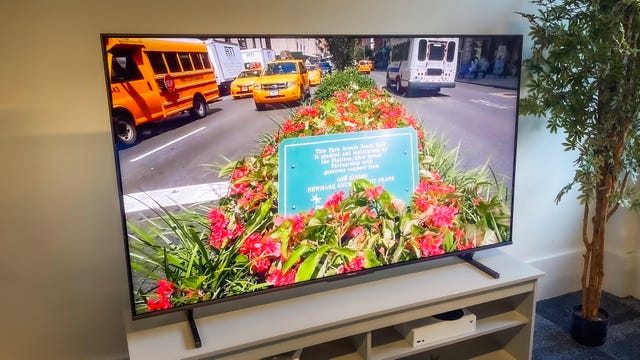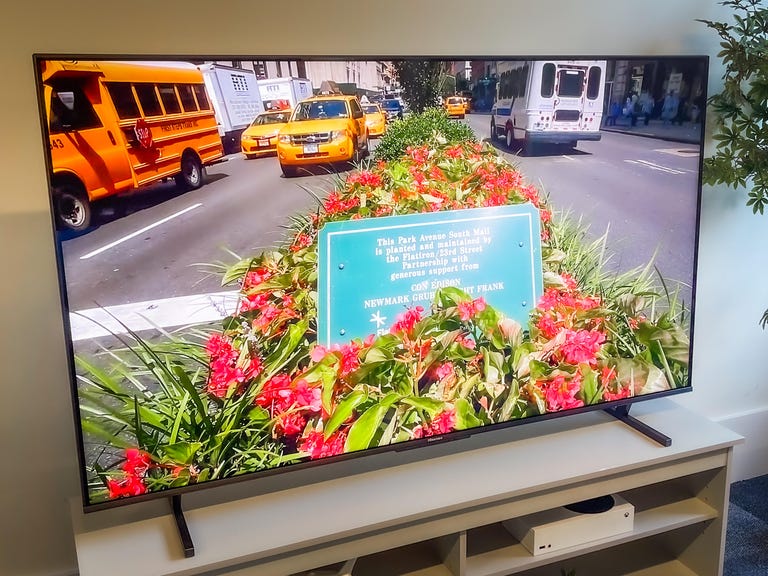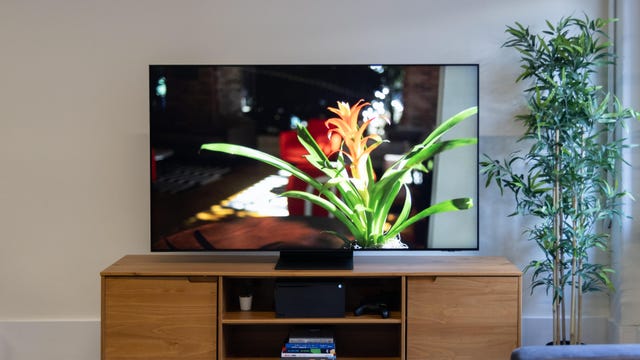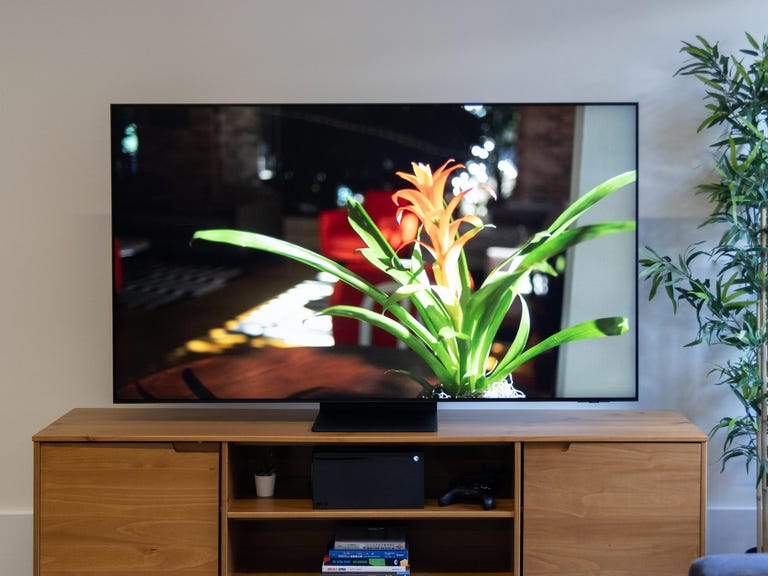A big TV is a big investment. At CNET, our general advice for TV shoppers is that bigger is usually better, especially if you’re looking to get the most return on your money. If you’ve been considering stepping up in size, and you want to save some cash, now’s the time to start seriously looking. To help you find the right big-screen TV for your needs and your budget, we’ve rounded up some of the best 85-inch TVs on the market right now.
The list below represents the best TVs I’ve reviewed in CNET’s test lab, where I’ve compared them side by side. I’ve actually reviewed the 65-inch sizes in the series for most of the models listed below, but the 83- and 85-inch versions are basically identical beyond screen size.
What is the best 85-inch TV right now?
After testing a handful of the best TVs for the money, I’ve found that the TCL QM8 series tops the list for a number of reasons. The QM8 offers superb picture quality overall, all the features you need in a modern television — including 4K/120Hz input and variable refresh rate that can get the most out of consoles like the PS5 and Xbox Series X — and an affordable price. When a friend asks me what 85-inch TV to buy, I tell them the TCL QM8 series.
There are plenty of other excellent choices out there, however. Even though the QM8 is my current favorite for most people, it might not be right for your preferences or budget.
Best 85-inch TVs of 2024
TCL has topped our list of the best TVs for the last few years but the QM8 is something different, and even better than before. In my comparison tests it stood out with superior brightness and impact while still maintaining excellent contrast — a combination no other TV could match at this price. The key is mini-LED tech and well-implemented full-array local dimming. It also has a sleek design with a center-mount stand. The operating system is Google TV, which I don’t like as much as Roku TV, but it’s still a solid smart TV. This model replaces the TCL 6-Series Roku TV from last year.
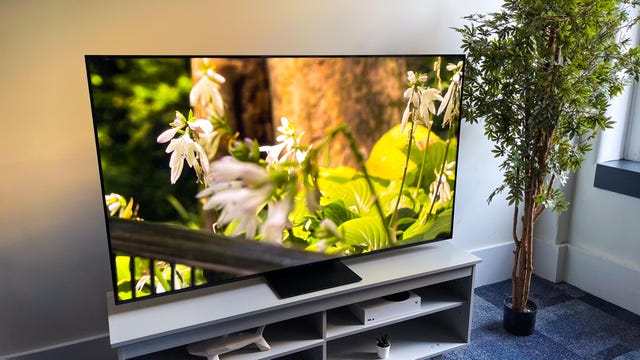
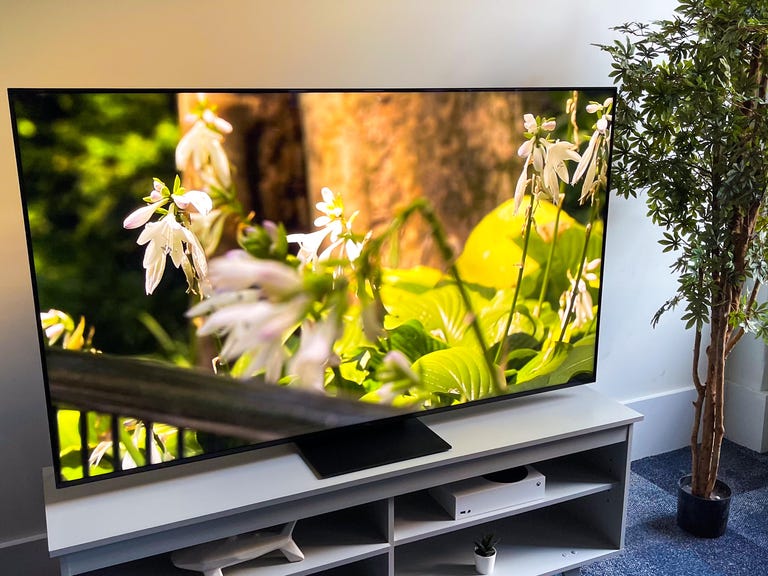
Best high-end 83-inch TV
LG OLED C3
OLED TVs have the best picture quality, but they don’t come in 85-inch sizes, so that’s why we’re listing this 83-inch size instead. The C3 represents better picture quality than any non-OLED TV on this list at a price that’s definitely higher but still not stratospheric. Its perfect black levels, unbeatable contrast and superb off-angle viewing kept it a notch above the mini-LED models in my comparison tests, and while its overall brightness isn’t quite as impressive, it’s still an incredible performer in all kinds of room lighting. The C3 is also one of the lightest TVs we’ve ever reviewed thanks to carbon-fiber construction.
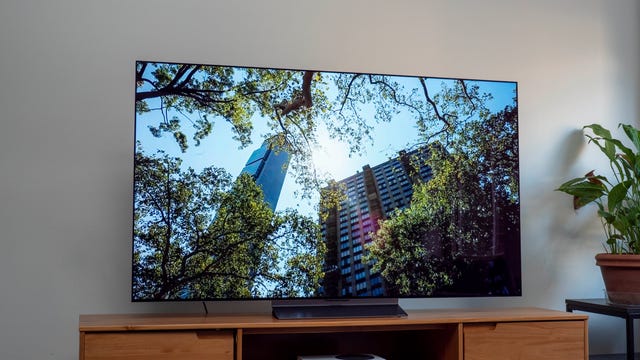
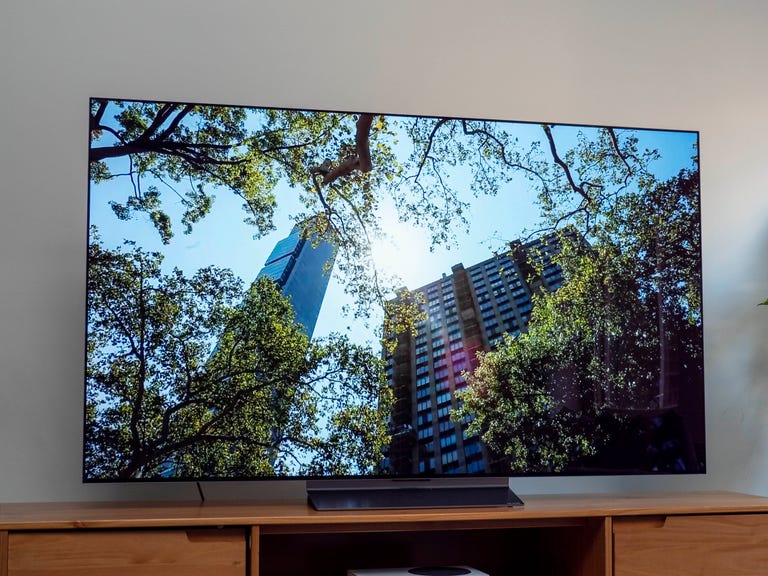
How CNET tests TVs
Our TV reviews follow a rigorous, unbiased evaluation process honed over nearly two decades of television reviews. Our primary TV test lab has specialized equipment for measuring light and color, including a Konica Minolta CS-2000 spectroradiometer, a Murideo Sig-G 4K HDR signal generator and an AVPro Connect 8×8 4K HDR distribution matrix. We use Portrait Displays CalMan Ultimate software to evaluate every television we review. In every CNET TV review, three or more similar TVs are compared side by side in various lighting conditions, playing different media, including movies, TV shows and games, and across a variety of test categories, from color to video processing to gaming to HDR. Our reviews also account for design, features, smart TV performance, HDMI input and gaming compatibility, and other factors.
One important aspect of image quality we test is overall brightness. Here’s how it compares in nits across select TVs listed above.
Light output in nits
| TV | Brightest mode (HDR) | Accurate mode (HDR) | Brightest mode (SDR) | Accurate mode (SDR) |
|---|---|---|---|---|
| Samsung QN65Q90B | 3,316 | 1,981 | 2,625 | 974 |
| TCL 65QM850G | 1,975 | 1,975 | 1,739 | 1,448 |
| Hisense 65U8K | 1,966 | 1,966 | 1,720 | 1,240 |
| LG OLED65G3 | 1,378 | 1,378 | 725 | 724 |
| Samsung QN65S95C | 1,348 | 1,326 | 238 | 648 |
| LG OLED65C3 | 861 | 817 | 501 | 464 |
| Vizio M65QXM-K03 | 939 | 742 | 958 | 608 |
| Roku TV Plus | 514 | 455 | 579 | 404 |
Check out How We Test TVs for more details.
Factors to consider when choosing a TV
With all the TVs available today, and all the technical terms and jargon associated with television technology, it can be tough to figure out what’s important. Here’s a quick guide to help cut through the confusion.
Price: TVs range in price from $100 to more than $2,000. Smaller screens are cheaper, well-known brands are more expensive, and spending more money can also get you better image quality. Most entry-level TVs have a good enough picture for most people, but TVs last a long time, so it might be worth spending more to get a better picture. It’s also best to shop for a TV in the fall, when prices are lower.
Screen size: Bigger is better in our book. We recommend a size of at least 43 inches for a bedroom TV and at least 55 inches for a living room or main TV — and 65 inches or larger is best. More than any other “feature,” stepping up in TV screen size is the best use of your money. One of the most common post-TV-purchase complaints we’ve heard is from people who didn’t go big enough. And we almost never hear people complain that their TV is too large.
Capability: When it comes to entry-level TVs, the most important feature is what kind of smart TV system the TV uses. Among midrange models, look for a feature including full-array local dimming, mini-LED and 120Hz refresh rate, which (unlike some other extras) do help improve the picture, in our experience. And among high-end TVs, OLED technology is your best bet.
For more TV buying advice, check out How to Buy a TV.
85-inch TV FAQ



